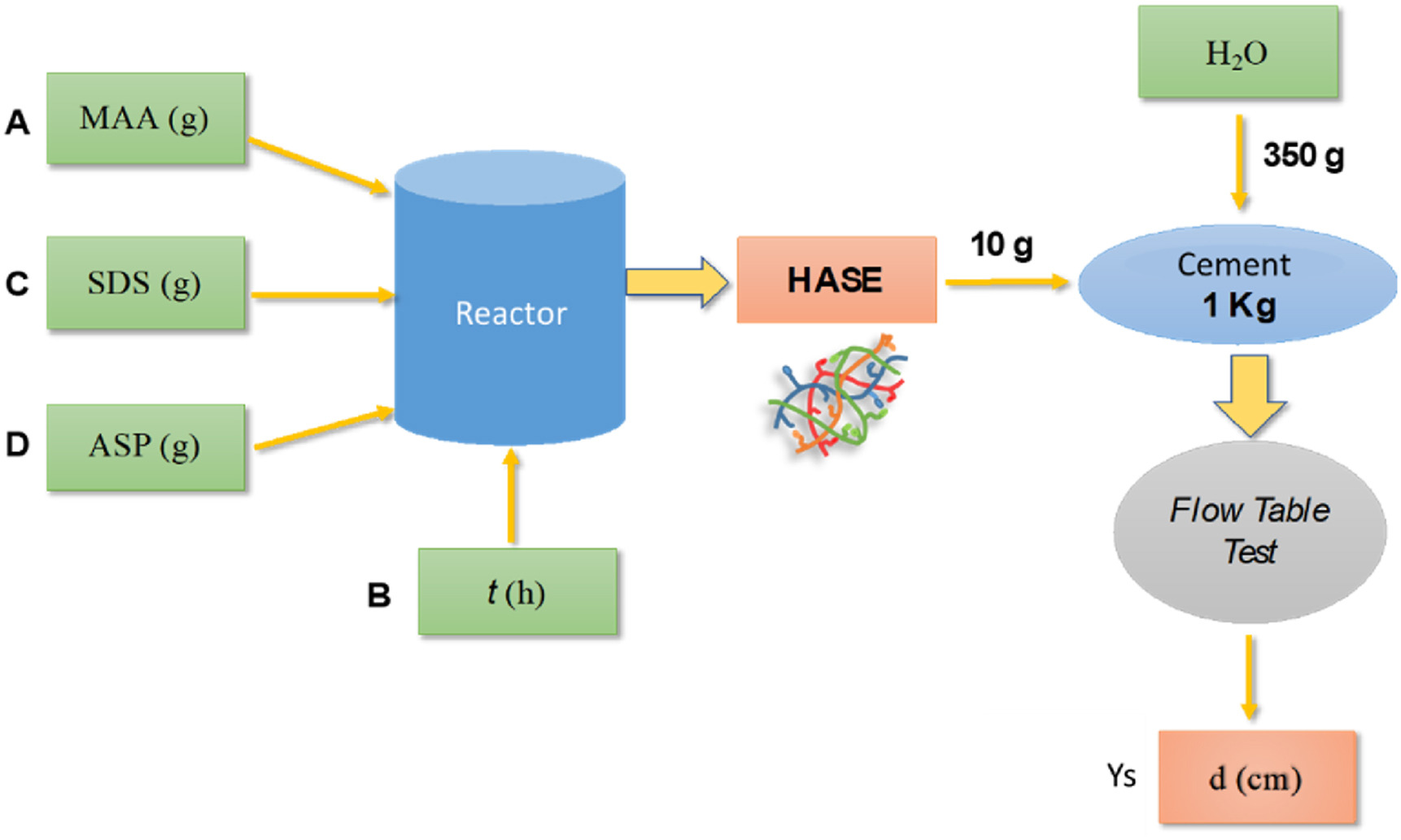Effect of hydrophobic polymers (HASE) as additives on the cement paste flow behavior
R Vitiello, M Di Serio, P Perrotta, R Tesser
https://doi.org/10.1016/j.rinma.2023.100370
Abstract
In the present study, the superplasticizing effect of HASE (Hydrophobic Alkali Swellable Emulsions) associative polymers on a cementitious formulation has been studied through a Design of Experiment (DoE) statistical approach. The main advantage of a study based on a DoE approach is that it gives the possibility of carrying out tests in which there is a combination of the parameters chosen on two extremes. Thus, the tests are driven by a combination of these parameters according to the design.
The DoE approach was used to optimize the combination of HASE polymer synthesis reaction variables. As a final response from the design, or rather as an objective of our synthesis, the superplasticizing effect that each polymer has on the final diameter variation of the cementitious formulation after the Flow Table Test was chosen. The variation of the final diameter was considered as the difference with respect to the same formulation without the addition of the superplasticizer.
The variables were chosen in such a way as to have the greatest impact on the reaction product, in particular the quantity of acidic methacrylic monomer (MMA), quantity of surfactant (SDS), quantity of free radical initiator (ASP) and reaction time (t). These variables were assumed to be independent variables. The design also included a central level, that is an experiment in which all the factors are set at an intermediate value between the minimum and the maximum. In this case, only one central level was added for a total of 17 experiments. By applying the DoE design it was possible to identify that the variable that has the greatest influence on the final response, that is the diameter of the cementitious formulation after the Flow Table Test, is the variable linked to the concentration of the initiator (ASP). The other variables showed a lesser influence on the final response.

